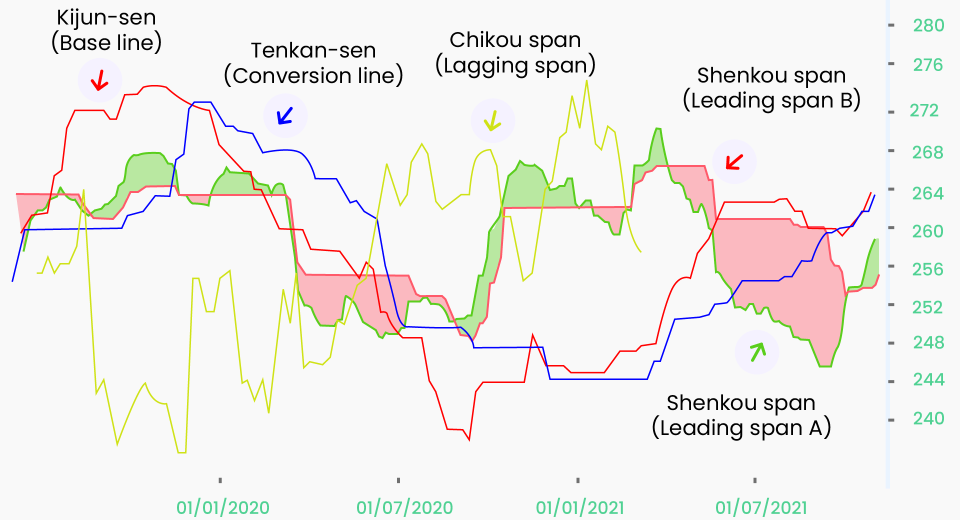Top 5 Principles to Trade the Volatile Crypto Markets

Analysts at the IMARC Group expect the cryptocurrency market to surpass $4 trillion, at a CAGR of 11.7% from 2023 to 2028. The nascent market of virtual currencies is exciting, and its wild volatility has produced many millionaires. At the same time, it can cost a trader a significant portion of their funds if they don’t take the time to learn all they can about the crypto market. A good place to get started is this guide to the top 5 principles to abide by when trading cryptocurrencies.
1. Learn What Moves the Market
The cryptocurrency market is unique because it never sleeps. It is up 24×7, which is reason enough to make it more volatile than any other financial market. Here are some of the key factors that move crypto prices:
Regulatory Backdrop
When governments acknowledge cryptos, either by adopting them, as done by El Salvador, or imposing taxes on them, it is a signal that digital currencies are gaining recognition. This lends upside to their prices. On the other hand, when a nation bans one or more cryptos, as done by China, market sentiment gets hit. Both scenarios move the crypto markets.
News Events
Major news about any financial market could impact cryptocurrencies. For instance, the banking crisis in the first quarter of 2023 hurt fiat investor sentiment and gave the crypto markets some momentum. On the other hand, the downfall of Terra (Luna) and the Wormhole Bridge theft of 2022 put downward pressure on crypto prices.
Risk Appetite
Since cryptocurrencies are a risky asset class, when risk tolerance among investors increases, they diversify into cryptos. For instance, when a cryptocurrency’s price surges against the dollar, the owners’ risk tolerance could increase. Similarly, when the economy is stable and growing, risk appetites tend to be higher.
2. Develop a Crypto Trading Strategy
Trading virtual currencies requires more patience and fundamental due diligence on the part of the trader. Traditional trading techniques of scalping, bot trading and range trading are used for cryptocurrencies as well. A few other popular strategies for trading cryptocurrencies include:
Trend Trading
Hopping onto a trend is popular among crypto traders since digital currencies tend to see wild upward and downward swings. Crypto trend trading may last from just a few minutes to months. As for any other asset class, traders usually open long positions during an uptrend and go short during a downtrend. A common technique is to use a 50-day simple moving average (SMA) crossover with a 100-day SMA as an entry point.
Dollar Cost Averaging (DCA)
This is a modified HODL (Hold On for Dear Life) technique. While HODLing, traders buy a cryptocurrency and hold on to it till it can yield outsized returns. However, this requires a thorough fundamental analysis of the crypto’s potential. Also, the investor will need to invest a large sum all at once to buy and hold a digital currency.
Traders use DCA to invest fixed or incremental amounts in one or more cryptos of their choice over a certain period. This way short-term price movements are smoothened out, while the overall crypto growth is expected to give good returns.
Straddling
This technique is similar to CFD trading in the traditional financial markets. Traders put buy and sell calls based on their prediction of future price movements of a coin. They take simultaneous positions in opposite directions to mitigate risk. This way their portfolio gets crypto exposure without owning any cryptocurrency.
Crypto Index Trading
There are many crypto indices for traders to gain exposure to multiple coins at once. It is similar to trading stock indices and is a lesser known but powerful crypto trading strategy. It also serves as a benchmarking practice for crypto performance for traders learning about the digital assets market.
Other ways to gain exposure to digital currencies without directly buying a coin or having a crypto wallet are trading stocks of companies that invest in cryptocurrencies, trading crypto CFDs and investing in crypto ETFs.
3. Get Acquainted with the Top Cryptocurrencies
It can be difficult to choose a cryptocurrency from the thousands available. Therefore, traders often start with the most popular ones, since they tend to have strong fundamentals and mass confidence. These coins have certain distinguishing characteristics, and their fundamental and growth study helps traders identify new coins with high potential. Here are a few examples:
Bitcoin (BTC)
This is the first and most popular, albeit priciest, crypto. BTC had risen almost 25% YTD in the first 3 months of 2023, after a dismal 2022. Bitcoin’s USP is its limited supply and robust security, such that its blockchain has never been compromised.
Ether (ETH)
Ethereum ecosystem has redefined the blockchain space by introducing smart contracts and making way for decentralised finance (DeFi) and decentralised applications (dApps). The native token, Ether, had risen over 55% in the first 3 months of 2023.
Litecoin (LTC)
The second oldest cryptocurrency is known as the silver to the digital gold that is Bitcoin. However, it has a much larger coin supply. LTC had risen over 28% in the first 3 months of 2023.
4. Choose the Right Technical Indicators
Like trading the traditional financial markets, technical indicators are essential tools in a crypto trader’s arsenal. A few commonly used indicators for trading cryptocurrencies are:
Fibonacci Indicator
The Fibonacci indicator is used to define retracement and extension levels within a price range for a crypto coin. The most commonly used Fibonacci percentages are 38.2, 50 and 61.8. These levels work as support and resistance levels for traders to identify entry and exit positions.
Bollinger Bands
This indicator forms three bands across the price of a cryptocurrency. This indicator used with the SMA (simple moving average) line to mark the middle line and K times the SMA’s standard deviation to mark the upper and lower bands. The middle line indicates the short-term direction in which the price is moving, while the distance between the upper and lower bands indicates volatility levels.
5. Don’t Make These Mistakes
A few common mistakes are made by many new entrants to crypto trading, such as:
- Not completely understanding the asset they are trading.
- Falling for pump and dump calls, without backing their purchase with adequate research.
- Skipping the fundamentals and due diligence about the underlying blockchain before trading a coin.
- Making trading decisions based on one of the FUD (fear, uncertainty and doubt) emotions.
- Ignoring taxes and trading costs while developing a crypto trading strategy.
- Bypassing their risk tolerance limits in hopes of making outsized gains in the wild cryptocurrency market.
It is useful to practice on a demo account to gain in-depth understanding of the market before using real money in the live markets.
Disclaimer:
All data, information and materials are published and provided “as is” solely for informational purposes only, and is not intended nor should be considered, in any way, as investment advice, recommendations, and/or suggestions for performing any actions with financial instruments. The information and opinions presented do not take into account any particular individual’s investment objectives, financial situation or needs, and hence does not constitute as an advice or a recommendation with respect to any investment product. All investors should seek advice from certified financial advisors based on their unique situation before making any investment decisions in accordance to their personal risk appetite. Blackwell Global endeavours to ensure that the information provided is complete and correct, but make no representation as to the actuality, accuracy or completeness of the information. Information, data and opinions may change without notice and Blackwell Global is not obliged to update on the changes. The opinions and views expressed are solely those of the authors and analysts and do not necessarily represent that of Blackwell Global or its management, shareholders, and affiliates. Any projections or views of the market provided may not prove to be accurate. Past performance is not necessarily an indicative of future performance. Blackwell Global assumes no liability for any loss arising directly or indirectly from use of or reliance on such information herein contained. Reproduction of this information, in whole or in part, is not permitted.




